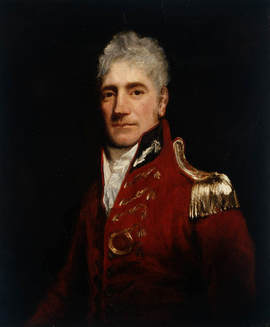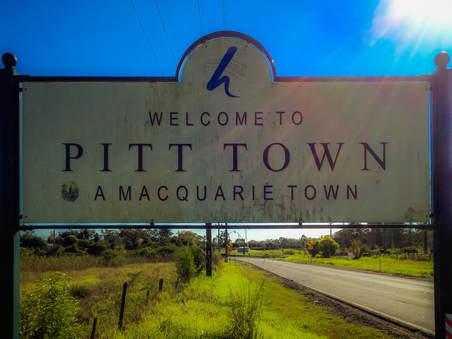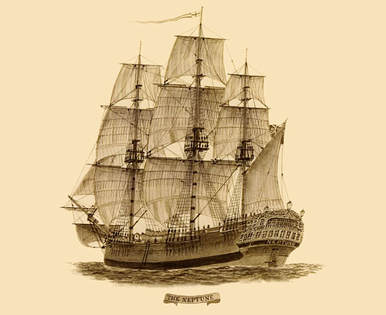|
British-Australia was established 84,766 days ago (at the time of writing - 23 February 2020). Today, the Commonwealth of Australia has a democratically elected prime minister and a hereditary monarch, Queen Elizabeth II. Her Majesty is represented in Australia by the Governor-General. Unlike today, however, in the late eighteenth and early nineteenth century, power was concentrated in hands of the governor appointed by Britain, resident in Australia. The fifth governor, Lachlan Macquarie, featured in one of the recent GCE / A-Level History examinations. The question required that students analyse his contribution to the development of British-Australia in the early nineteenth century. So, then, what are the key three things that we should know about the man?  Portrait of Governor Lachlan Macquarie, 1810-1821. Portrait of Governor Lachlan Macquarie, 1810-1821. Lachlan Macquarie in Context New South Wales was established as a British penal colony in January 1788, during the reign of King George III, as the intended repository for the ever-growing number of convicted criminals in Great Britain at the time. Previously the Thirteen Colonies of British North America had been the destination of transported criminals. However, with the loss of America in 1783, Britain was in desperate need of an alternative. British jails were massively overcrowded in the late 18th century, to the extent that decommissioned ships were converted into temporary floating prisons. The alternative to America was some 16,500km from London, rather than the 5,500km to New York. Australia was - in the eyes of the British judicial system - ersatz America. Historian Lawrence James argues: "They (convicts) were to provide the sinews of a new colony that, in time, would profit Britain, which would be preferable to having them idling in prison cells or the hulks." The new ‘pop-up’ penitentiary was populated mostly by convicted felons in its early days. It was initially marshalled by the New South Wales Marine Corps and then quickly relieved by the New South Wales Corps between 1789-1810, whilst being run by a governor appointed from London. Indeed, whilst the American colonists had chafed under the rule of the various British governors before 1776, early British-Australian convicts had virtually no say whatsoever in the governance of the colony. This responsibility rested solely with the Governor, backed by a cadre of Redcoats for muscle. Convicts were in Australia to serve sentences, work and, if they were able to serve the duration of the time spent at ‘Her Majesty’s Pleasure’, gain a small land grant. Into this context entered Lachlan Macquarie. He became the fifth governor of New South Wales, serving between 1809-1821. Arriving some 21 years after the establishment of British-Australia, Macquarie was tasked with developing the colony and ensuring a swift and sustained return to good discipline and order. Indeed, it was not just the convicts that needed correction. The New South Wales Corps themselves had rebelled in 1808. Against this turbulent backdrop, Macquarie commenced his role as the Governor, some six months after setting sail from Britain. What three things should we know? 1) Macquarie built. He took the reins of British-Australia in 1810; this was a turbulent and testing period in the nation’s history. By the time that Macquarie had relinquished his post in 1821, the colony was significantly more stable and prosperous than when he had arrived. The elaborate building works in Sydney were a testament to his grandiose vision for the colony. Moreover, the footprint of Macquarie can still be seen in Australia’s earliest towns. He assiduously nurtured the development of the five ‘Macquarie Towns’ - Castlereagh, Pitt Town, Richmond, Wilberforce and Windsor - which laid the platform for early and future urban development in Australia. These towns were built towards the ‘Blue Mountains’, where sheep farming - one of the primary staples of Australia’s future economy - could take root. This contributed to the increased level of self-sufficiency in terms of food production, reducing Australia’s dependence on foreign imports. By end of Macquarie’s time ‘down under’, there were nearly 300,000 sheep in Australia, which served the white-settlers’ pockets and their bellies well. However, this had a truly devastating impact on the aboriginal population, who found that the sheep devoured the land on which the native kangaroo lived and pushed them into increasing conflict with land-hungry colonial farmers. 2) Macquarie rehabilitated. Historian Niall Ferguson highlights the continuities and the changes between Macquarie’s governorship and those of his predecessors. "Macquarie was every bit as much of a despot as his naval predecessors ... But unlike them, Macquarie was an enlightened despot. To him, NSW was not just a land of punishment, but also a land of redemption. Under his benign rule, he believed, convicts could be transformed into citizens." Governor Macquarie certainly aimed to ensure that the convicts could attain earthly salvation through hard work, obedience and good discipline. For every convict that was able to complete their sentence, a generous grant of 30 acres of land awaited them. Moreover, Macquarie allowed some convicts to undertake legal roles and aimed to improve the awful conditions aboard the penal ships that were used to transport the felons to Australia. 3) Macquarie was a Marmite figure. He certainly did not please everyone. Australia’s reformed criminals no doubt looked upon his munificent land grants positively. In addition, Macquarie’s contribution towards the planning and development of Australia’s early towns is undoubted. That these towns have stood the test of time constitutes Macquarie's enduring legacy. To this end, Macquarie was admired by those who viewed his developmental endeavours as a necessary prerequisite in the process of transition from a dedicated penal colony to a fully functional outpost of the British Empire. However, there were those in London who viewed Macquarie as financially wasteful, a misguided spendthrift and a colonial loose cannon, beyond the reproach or rebuke of his superiors in London. There were those in Australia who viewed Macquarie as being overly lenient on the convicts. His unswerving commitment to the provision of land grants was seen by some as a dangerous threat to the social status-quo and the entrenched privileges of Australia's 'free settlers'. Moreover, the indigenous aboriginal population continued to suffer significantly while Macquarie was governor as little of substance was done to reign in the settlers' lust for land or moderate the concept of terra nullius, which the British applied to Australia. Like Marmite, Macquarie was not to everyone's taste.
Thank you for reading. Feedback is always welcome! Patrick O’Shaughnessy (@historychappy) Co-Editor of Versus History
4 Comments
Sue Burvill-Shaw
18/7/2018 19:31:59
A useful summary. I'd suggest that the events of 1975 refute this claim a little- purely ceremonial Governor-General, a role with no bona fide executive power. Getting rid of an elected government is pretty powerful. You might also want to consider Macquarie's role in re-establishing Crown control from the Rum Corp.
Reply
Patrick
26/7/2018 17:41:43
Thank you for the feedback - much appreciated!
Reply
Dr Louise Zarmati
19/7/2018 09:05:49
A very succinct summary and well written piece. Great to hear Australian colonial history is included in GCSE. You might like to add something on the Bigge Report which presented an alternative (i.e. negative) ersective of Macquarie’s governorship and ultimately led to his recall 😀
Reply
Patrick
26/7/2018 17:42:36
Thanks for the feedback - will take a look at the Bigge Report! Much appreciated.
Reply
Leave a Reply. |
Categories
All
Archives
April 2024
|



 RSS Feed
RSS Feed